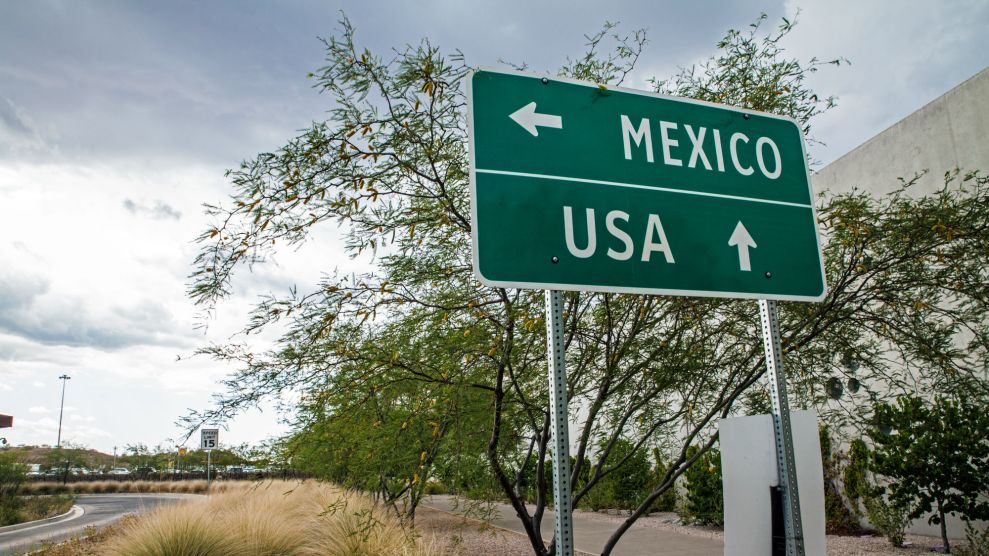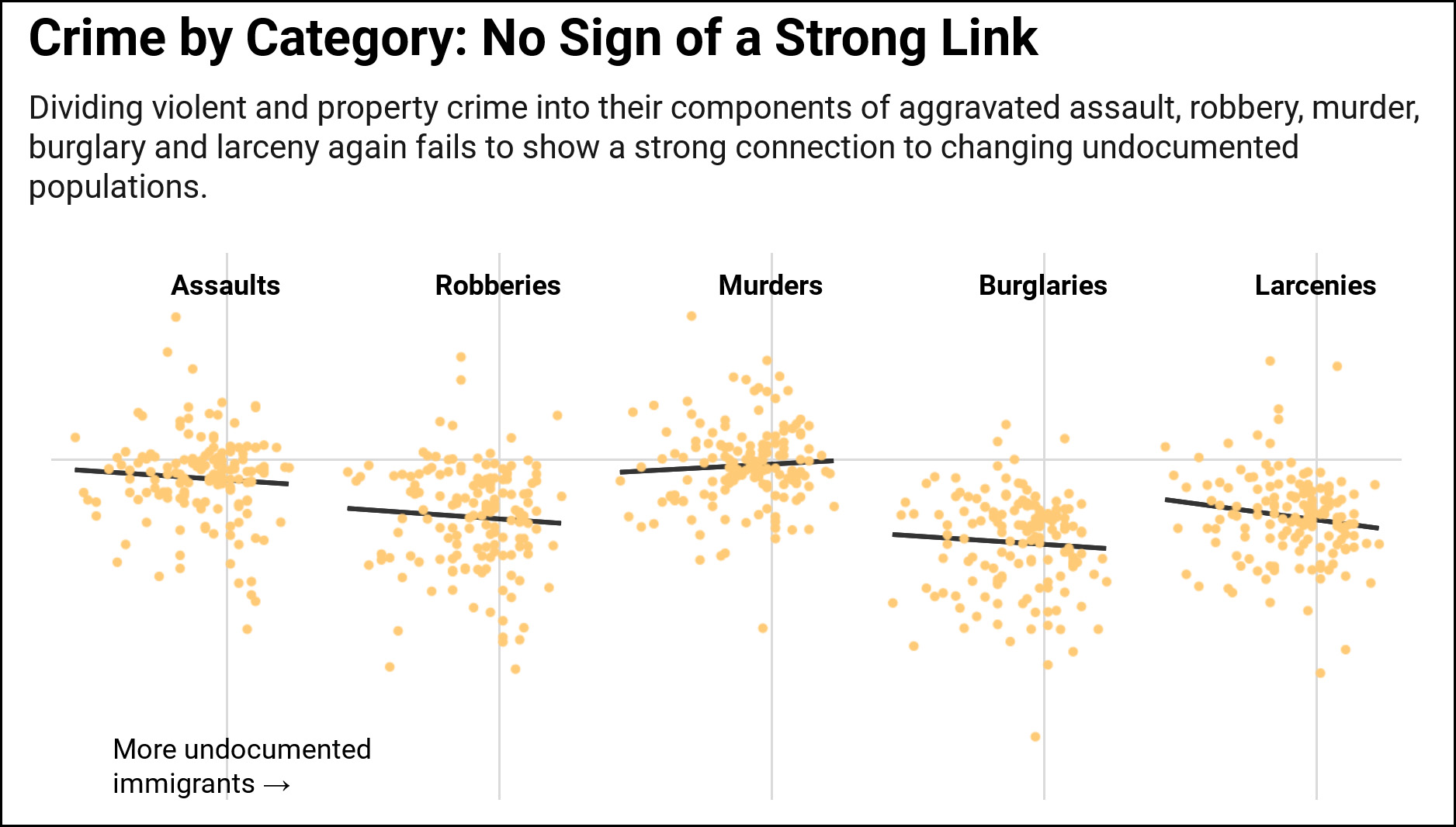
Shutterstock
We have a new study on whether there’s an association between crime and undocumented immigrants. Today the New York Times reports on the change in crime vs. the change in undocumented immigrants in about a hundred metro areas across the country over the period 2007-2016. In general, of course, crime rates have fallen during that time. But have they fallen more or less in areas with big growth in undocumented immigrants? Here are the results:

The headline here is correct: you certainly can’t say that crime goes up when undocumented immigration increases, but you can’t really say it goes down either. The trendline is basically flat given the quality of the data we have.
This has always made sense. The vast majority of undocumented immigrants come to America to work. The last thing they want is a run-in with the law, even for the most trivial offense. They have far more incentive to avoid criminal behavior than native Americans do.
This study is just a correlation between populations, so it’s inherently not foolproof and it certainly won’t stop the argument about illegal immigration and crime. That said, there are lots of other studies out there that have come to much the same conclusion. None of them are perfect, but put them all together and it’s pretty clear that there’s really nothing here. Undocumented immigrants don’t commit crimes any more than us native Americans do.















